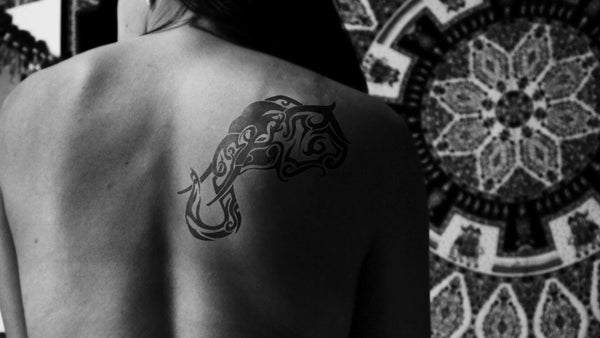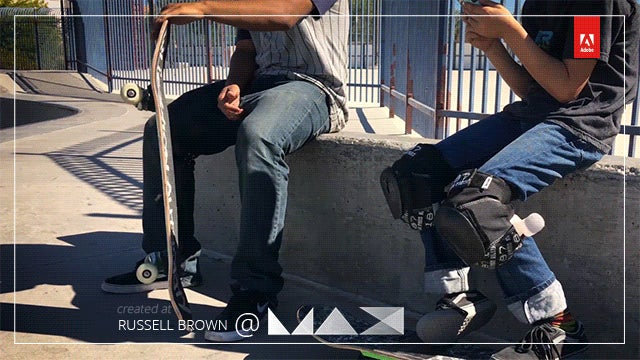Beyond Still Life: Engaging Customers With Cinemagraphs
How the cinemagraph came to be and what it can do for your business.

Original photo by Gary Arndt, cinemagraph by Chris Converse.
Have you ever seen a digital photo and then realized that one small part of the image is moving? That’s a cinemagraph. Scrolling through your Instagram feed, you might see a post from a favorite tattoo artist. At first glance, it’s a photo of a tattoo – then a movement catches your eye. That tattoo artist has effectively engaged you in their post using a combination of still photo and video.

Tattoo animation by Guzmán Caballero.
Less expensive than a full-blown video, a cinemagraph is the perfect place to start in your quest to engage more people with your brand. And Creative Cloud for teams gives you all the tools necessary to create just such a composite.
We talked to Chris Converse of Codify Design Studio to learn more about the cinemagraph, its history, and the growing use of cinemagraphs in social media and advertising.
The genesis of the cinemagraph
The term “cinemagraph” was coined by Kevin Burg and Jamie Beck in 2011, but animated image sequences go all the way back to the late 1990s. “What made Burg and Beck’s work so unique is that they created photo and video assets specifically to create a cinemagraph effect,” says Chris. “Their combination of video and carefully masked photography achieved an entirely new aesthetic for this type of animation.”
A cinemagraph is very different from a GIF, although the two have similar properties. Cinemagraphs generally require much more hands-on and involved compositing, and this can create some challenges. “In the beginning, I wasn’t very experienced with shooting video,” Chris says. “I would often have too many things visible in my shot, making me unable to isolate a main subject for my cinemagraph. Other times, my main subject wouldn’t repeat a motion for long enough, or the subject would be placed differently by the end of the motion than it was at the beginning.” But, Chris notes, the cinemagraph is an experience. This allows for a lot of innovation.
The evolution of cinemagraphs
The cinemagraph has come a long way and people are experimenting with all kinds of iterations. “The cinemagraph is not bound by a specific technique or technology,” says Chris. “It’s possible to achieve the cinemagraph experience using CSS, JavaScript, or even animation software — no video assets required.”

Adding motion to beautiful still photography makes something mesmerizing from something ordinary. Culinary arts cinemagraph by Daria Khoroshavina.
The best way to determine how you’d most like to create cinemagraphs is to choose a subject and go out and make it happen. With so many tools available, you can even simulate the effects for a cinemagraph, which Chris sometimes does. This eliminates the need to shoot your own video. “Digitally creating snow, light effects, fog, or water ripples allows me to create perfectly seamless loops while maintaining the amorphous nature of the subject matter.”
When to use cinemagraphs
There are countless uses for cinemagraphs. One of the most popular uses is in advertising. Businesses are constantly faced with the challenge of engaging customers and creating content that their customers want to see, and the cinemagraph maintains attention in a way video can’t always achieve. The cinemagraph is also more affordable than video.
“I think cinemagraphs are so compelling in advertising because they combine the motion we’re attracted to with a photo that immediately speaks to us,” Chris says. “This combination helps to create ads that attract and communicate faster with the audience.”

This cinemagraph is a composite of artwork by Von Glitschka and a video shot by Rocky Montez-Carr. Chris Converse then rotoscoped the artwork onto the video, frame-by-frame.
Consider using cinemagraphs in your social media promotion as a way to highlight a new product. You can also use cinemagraphs as header images on web pages or websites, and to add interest in emails. All of these uses are ways a cinemagraph can add value and interest to your communication and help connect you to customers.
Chris says his favorite way to see a cinemagraph is “on a large screen – especially at a tradeshow or in a window display. Somewhere that it’s larger than me and can fill my vision.”
The most surprising use of a cinemagraph Chris has seen is in a TV commercial. “I remember seeing a cinemagraph in a Pizza Hut commercial,” says Chris. “I was surprised because TV is such a passive activity, and I suspected that the cinemagraph experience wouldn’t translate as well in that medium — where everything is in motion all the time. But it stood out.”
Create your own cinemagraph
Cinemagraphs are not as hard to create as people might think. Even if video isn’t something you’re familiar with, you can find other ways to inject motion into a still photo. “In the case of JavaScript, for example, parts of an animation can be randomized,” Chris says. “This means the animation can play indefinitely without a recognizable loop.” You can also create a cinemagraph using a carefully crafted photo and stock video.
There are many things to consider when creating a cinemagraph, but here are a few tips from Chris that he’s learned through trial and error:
- Use a tripod. For video-based cinemagraphs, you cannot use your fingers braced against a lampost to get a stable shot. You can find other clever ways to stabilize your camera, or phone, but they should not involve you touching it in any way. Using your phone’s video capabilities, start by taking short video clips of things you would normally photograph, like a flickering candle at a dinner table, or a rippling pond.
- Note the properties of the main subject. If the subject is transparent, like a water fountain, try to angle your shot so nothing is moving behind it. You won’t be able to mask out the unwanted motion that can be seen through your subject. Dive into any number of editing tools — Photoshop, After Effects, or Premiere Pro — to start creating. Once you get the hang of masking a photo to reveal video underneath, the possibilities are endless.
- Experiment. Don’t worry about taking too much advice from others. If you have an idea, give it a try. That’s how new and interesting techniques come to be. That’s how we got cinemagraphs in the first place.
Create your own cinemagraphs using Creative Cloud for teams and these tips from Kevin Burg, or follow this video tutorial to get started.